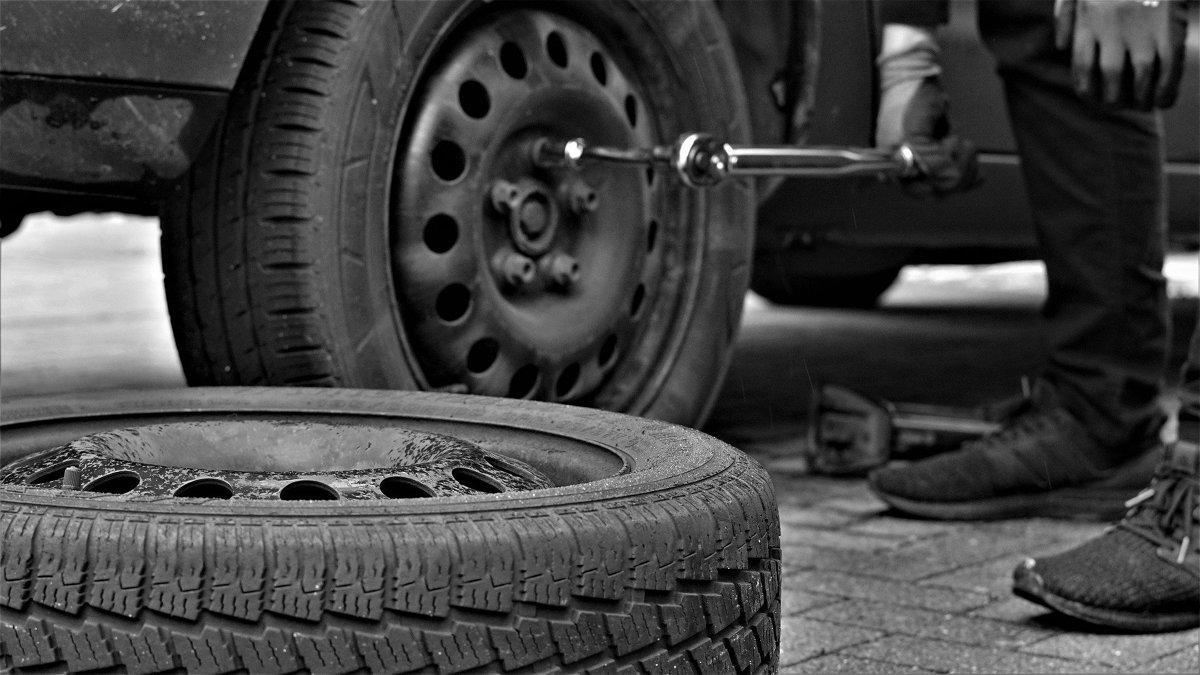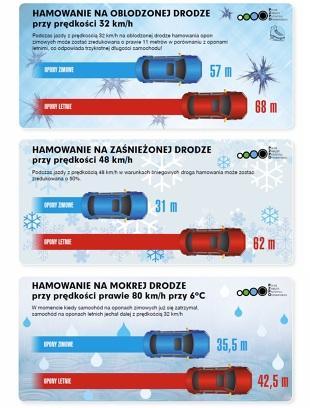
Tire change. In the middle of winter, many drivers use summer tires. It's safe?
 According to studies and observations at seminars, it turns out that as much as 35 percent. drivers use summer tires in winter. This is a paradox - as much as 90 percent. claims to change tires to winter tires before the first snowfall**. Poland is the only EU country with such a climate, where the regulations do not provide for the requirement to drive on winter or all-season tires in autumn-winter conditions. Meanwhile, according to a 2017 and 2018 Moto Data study, 78 percent. Polish drivers are in favor of introducing a requirement to drive on winter or all-season tires in the winter season.
According to studies and observations at seminars, it turns out that as much as 35 percent. drivers use summer tires in winter. This is a paradox - as much as 90 percent. claims to change tires to winter tires before the first snowfall**. Poland is the only EU country with such a climate, where the regulations do not provide for the requirement to drive on winter or all-season tires in autumn-winter conditions. Meanwhile, according to a 2017 and 2018 Moto Data study, 78 percent. Polish drivers are in favor of introducing a requirement to drive on winter or all-season tires in the winter season.
The European Commission indicates *** that in 27 European countries that have introduced a driving requirement for winter permits (winter and year-round), this was 46 percent. reducing the likelihood of a traffic accident in winter conditions - compared to driving on summer tires in the same conditions. The same report proves that the introduction of a legal requirement to drive on winter tires reduces the number of fatal accidents by 3%, this is an average value - there are countries that have recorded a decrease in the number of accidents by 20%.
– Drivers themselves want to introduce a requirement to change tires to winter ones – thanks to this, everyone could adapt to weather conditions without thinking about when to do it and without waiting for the first snow. Our climate suggests that such a requirement should be valid from December 1 to March 1 and conditionally in November and March. You can often find the opinion that the modern safety systems that a car is equipped with are quite enough to avoid an accident, and tires do not play a big role in road safety. There is nothing more wrong - tires are the only part of the car that comes into contact with the road surface. In the autumn-winter season, only winter tires guarantee adequate safety and grip. winter or good all-season tires. When driving at speeds as low as 29 km/h in snow conditions, winter tires can reduce braking distances by up to 50% compared to summer tires. Thanks to winter tires in a car, SUV or van, we have better traction and we will brake faster on wet or snowy roads - and this can save lives and health! says Piotr Sarnecki, director of the Polish Tire Industry Association (PZPO).
 Auto Express and RAC test records on winter tires **** show how tires that are adequate to temperature, humidity and slipperiness of the surface help the driver to drive and confirm the difference between winter and summer tires, not only on icy roads. or snowy, but also on wet roads in cool autumn temperatures:
Auto Express and RAC test records on winter tires **** show how tires that are adequate to temperature, humidity and slipperiness of the surface help the driver to drive and confirm the difference between winter and summer tires, not only on icy roads. or snowy, but also on wet roads in cool autumn temperatures:
- On an icy road when driving at a speed of 32 km / h, the braking distance on winter tires is 11 meters shorter than on summer tires, which is three times the length of the car!
- On a snowy road at a speed of 48 km/h, a car with winter tires will slow down before a car with summer tires by as much as 31 meters!
- On a wet surface at a temperature of +6°C, the braking distance of a car on summer tires was as much as 7 meters longer than that of a car on winter tires. The most popular cars are just over 4 meters long. When the car with winter tires stopped, the car with summer tires was still traveling at over 32 km/h.
- On a wet surface at a temperature of +2°C, the stopping distance of a car on summer tires was as much as 11 meters longer than that of a car on winter tires.
See also: How to save fuel?
Tires approved for winter (snowflake symbol against mountains), i.e. winter tires and good all-season tires - they also significantly reduce the likelihood of skidding. First of all, they have a softer rubber compound that does not harden when subjected to falling temperatures, and numerous blocking cuts and grooves. More cuts provide better grip in autumn rain and snow conditions, which is especially important with frequent rain and snowfalls in the autumn-winter period. They have not been winter tires for a long time - modern winter tires are safety in the cold - when the temperature in the morning is below 7-10 ° C.
* Nokian Research
https://www.nokiantyres.com/company/news-article/new-study-many-european-drivers-drive-on-unsuitable-tyres/
** https://biznes.radiozet.pl/News/Opony-zimowe.-Ilu-Polakow-zmieni-opony-na-zime-Najnowsze-badania
*** Komisja European, Study on some safety aspects of tire use, https://ec.europa.eu/transport/road_safety/sites/roadsafety/files/pdf/vehicles/study_tyres_2014.pdf
4. Winter tires vs summer tires: the truth! — Auto Express, https://www.youtube.com/watch?v=elP_34ltdWI